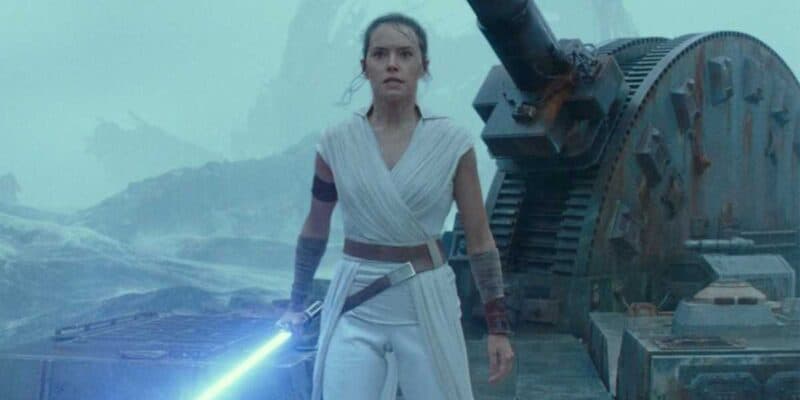A damning report reveals just how much Disney spent on the divisive sequel trilogy installment.

Star Wars: Episode IX–The Rise of Skywalker (2019) closed out the nine-part Skywalker Saga with a mix of spectacle, nostalgia, and controversy. Directed by J.J. Abrams, the film follows Rey (Daisy Ridley), Finn (John Boyega), and Poe (Oscar Isaac) as they confront the resurrected Emperor Palpatine (Ian McDiarmid) and bring the Resistance’s fight to its ultimate conclusion.
While many praised its visual effects and emotional callbacks to earlier films, others criticized its rushed pacing, heavy reliance on fan service, and abrupt reversals of storylines from 2017’s Star Wars: Episode VIII–The Last Jedi. Despite the divided reception, the movie performed strongly at the box office, earning over $1 billion worldwide–though it fell short of the record-breaking success of Star Wars: Episode VII–The Force Awakens (2015) and Rian Johnson’s The Last Jedi. The result was a finale that proved both financially successful and fiercely debated, leaving Star Wars fans divided over how the legendary saga came to an end.

Now, the polarizing entry has once again found itself in the spotlight, this time, not for its controversial storytelling choices but for its staggering price tag. According to a recent report highlighted by Forbes, the final installment in the Skywalker Saga carried an astonishing production cost of nearly $600 million before tax breaks–a figure that cements it as one of the most expensive movies ever made.
The film’s gross budget reportedly came in at $593.7 million, though thanks to generous tax incentives from the United Kingdom, Disney was reimbursed about $103.8 million, bringing the final net cost to roughly $489.9 million. Even with that reduction, the numbers are jaw-dropping, particularly for a movie that divided critics and audiences more sharply than any Star Wars project before it. While the film managed to pull in just over $1 billion worldwide, the profit margin may have been slimmer than expected for a tentpole of its size.

The report sheds light on a broader trend in blockbuster filmmaking, where escalating budgets have become almost synonymous with major franchises. But even by modern Hollywood standards, The Rise of Skywalker’s costs stand out. As the article notes, Disney’s decision to “course-correct” after the backlash to The Last Jedi may have driven up both creative and financial stakes. The end result was a production that spared no expense, yet still left fans deeply divided over its storytelling and direction.
For Disney and Lucasfilm, The Rise of Skywalker represents both a commercial success and a cautionary tale. While it ultimately turned a profit through box office revenue, merchandising, and streaming, the film’s enormous cost and mixed reception have raised important questions about the future of the Star Wars franchise.

The Rise of Skywalker Remade
Just over five years after The Rise of Skywalker closed out the Skywalker saga to a chorus of cheers and boos, Lucasfilm has quietly re-entered the ring, not with a new film, but via the pages of a comic. What’s emerged is, in effect, a remade ending, one that tweaks and expands the film’s most debated moments to give fans something they’ve longed to see.
The vehicle for this reinterpretation is a five-issue Marvel adaptation, helmed by writer Jody Houser and artist Will Sliney, which doesn’t just retell the story: it revisits it. What we thought we knew becomes a little more vivid. The biggest change arrives at the climax — the “All the Jedi” moment. In the original film, Rey is lifted by the voices of past Jedi; it’s haunting, but intangible.
In issue 5 of the comic, we finally see them. Forces long departed–Qui-Gon Jinn, Obi-Wan Kenobi, Luke Skywalker, and others–materialize as spectral presences, offering Rey aid in her final stand against Palpatine. It’s a visual confirmation of what the film only hinted at.

Lucasfilm’s decision to revise one of the most emotionally resonant beats in the sequel trilogy signals more than nostalgia–it suggests a willingness to reshape parts of the narrative in light of fan feedback. The original Rise of Skywalker faced intense scrutiny for sudden turns: Rey’s lineage revelation, Palpatine’s resurrection, and the handling of Kylo Ren’s (Adam Driver) arc prompted debates that have echoed ever since.
This change arrives at a moment of transition for the franchise. After a hiatus in theatrical releases, Star Wars is poised to return: The Mandalorian and Grogu hits cinemas in May 2026, followed by Shawn Levy’s Star Wars: Starfighter in 2027. Meanwhile, Lucasfilm has announced a new trilogy under Simon Kinberg, raising questions about how this expanded or “corrected” past might inform what comes next. Some insiders even suggest Rey–once a contested figure–may be repositioned as one of the franchise’s most vital assets going forward.

This comic doesn’t override the film’s canon. But by offering a more complete visual echo of the Jedi’s presence, it reframes a scene that many felt lacked closure. Now, fans can do more than hear voices, they can witness a moment that, for half a decade, lived only in imagination.
How do you feel about the cost of The Rise of Skywalker? Let Inside the Magic know in the comments down below!
